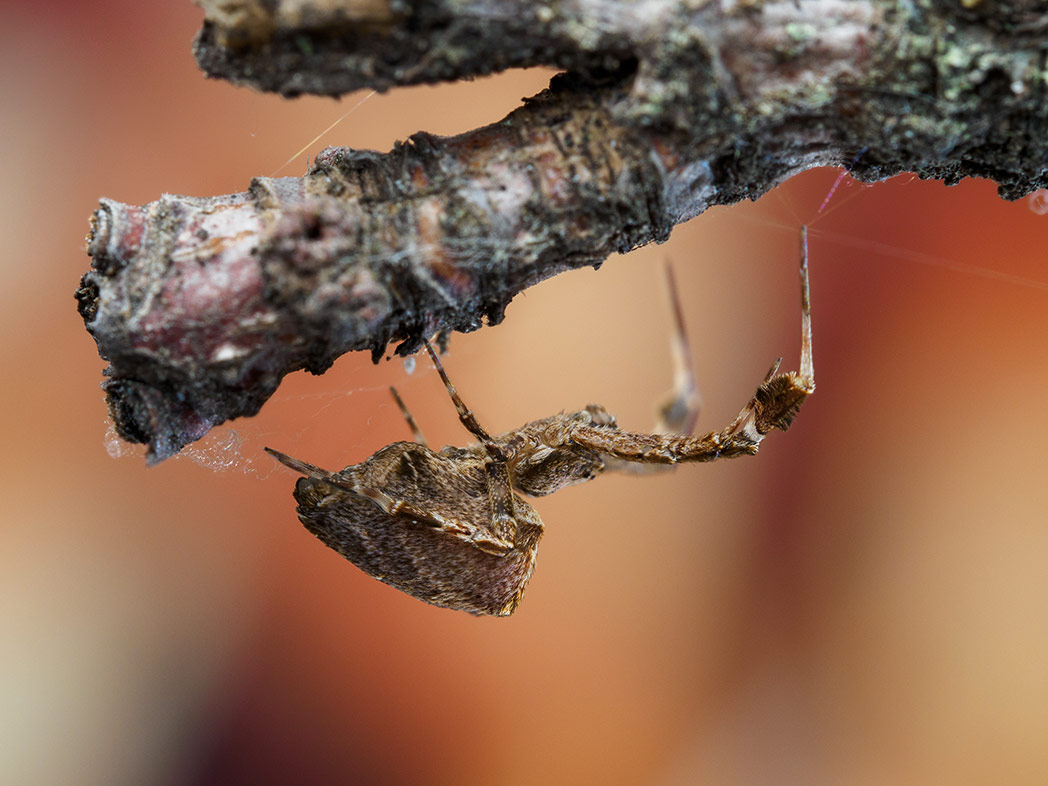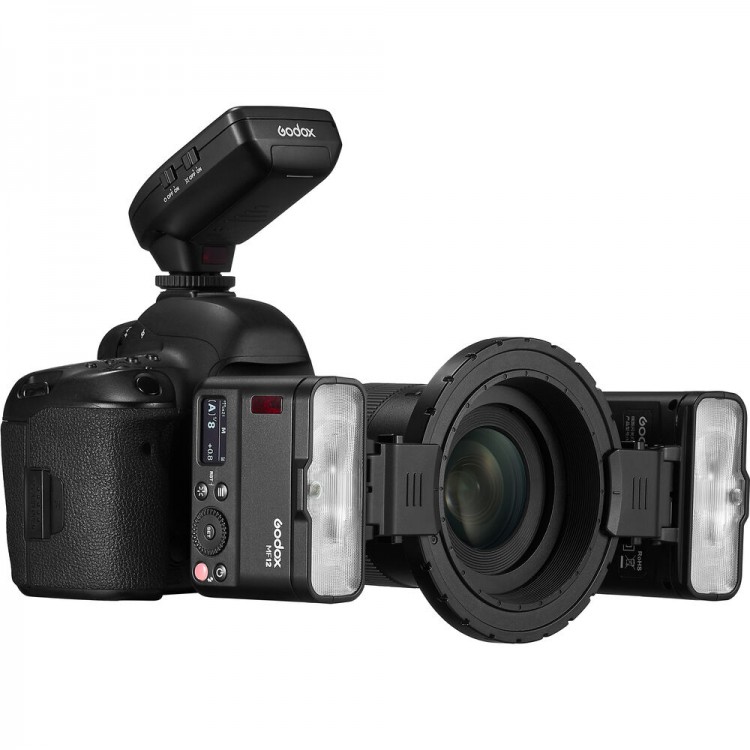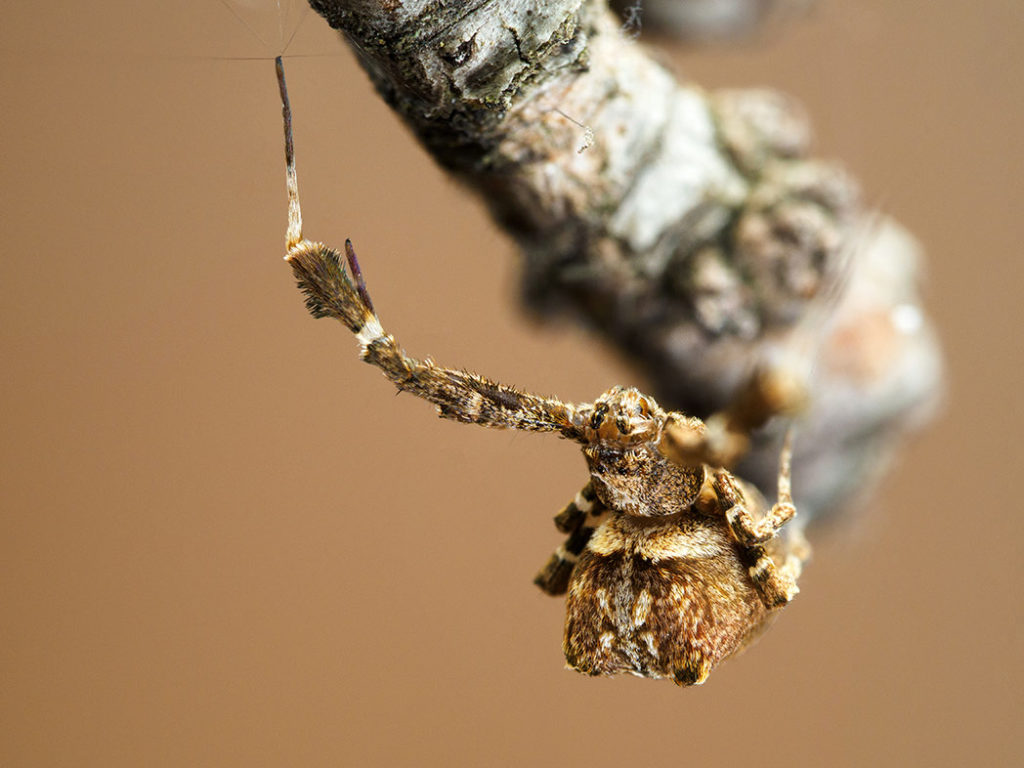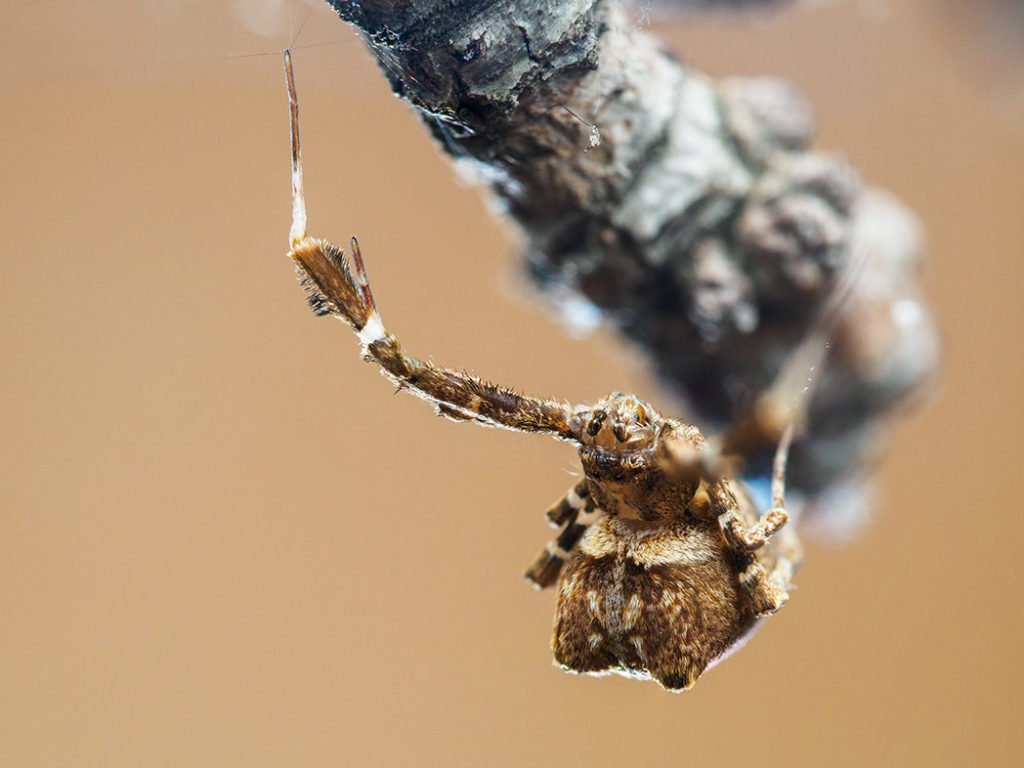26 Jan Review: The innovative GODOX MF12 Mini Macro Flash – First Impression
This review / test can hopefully help you if you are thinking about buying the Godox MF12.
Why did I add the Godox MF12 Mini Macro Flash to my gear for Macro Photography?
Well, there are only a handful dedicated true Macro flashes on the market.
It is mostly either the twin flash, a ring flash or the classic on/off camera speedlite with additional diffuser.
Godox just released a unique new Macro flash, that is extremely versatile, modular and promises to be a true innovation.
The brand has been offering a strong range of powerful flash guns with features you would normally only find on much more expensive products in the past.
The new MF12 Macro Flash fits the range perfectly and due to its versatility it can be used in different ways.
Let us take a first look at what makes the Godox MF12 special and what makes it stand out from its competitors, especially when it comes to Macro Photography.
For this first-look review i only had 1 unit of MF12 and could not test the usage of 2 or more units simultaneously yet.
I also did not have a radio trigger to fire it. One of the many strengths of this tiny flash though, is that it offers a range of methods to fire it.
For the testing it was controlled by a Godox V350O and Godox V1 being the masters and the MF12 being a slave unit.
Triggering it via Secondary Optic Triggering (in M mode) would have also been a solution.

First Impression and Contents
The MF12 comes in a cubic nylon-design carry case with zipper. It is sturdy and packs all contents in two chambers.
Like the flash itself, all additional components are of high quality and feel great.
With the flash you will get:
- 1x Diffuser Cap
- 1x Flash stand
- 1x Cold Shoe adapter (with metal thread)
- 1x Positioning Adapter for the Multi Flash Adapter for the Lens filter thread
- 1x Type-C USB Charging cable
- 1x Color Filter Holder
- 1x Color Effects Set MF-11C
- 1x Color temperature Adjustment Set MF-11T
- 1x Soft Case for the 2 Filter Sets
The MF12 has an Angle adjustment bracket, which can either be clipped on the multi-flash adapter ring if you own one, or connect to the Cold Shoe (and optional the Stand).
You could also just position the flash on the ground using the bracket as well.
The workmanship is high-quality: everything fits perfectly, there is no wobbling and threads and screws are made from metal instead of just simple plastic.
The unique and innovative Features of the MF12 Mini Macro Flash
Modular System
The MF12 is both a single unit flash and also part of a modular system.
You can clip on up to six MF12 flash units to the lens adapter which creates a ring of flashes around the lens axis.
Together with a Radio Trigger (like the Godox XPro, X1, X2) one or more MF12 can be fired wirelessly.
Being such a compact and small flash it combines a wide range of features you would not necessarily expect from it.
Built-in High-performance Lithium Battery
The built-in battery supports up to 500 flashes with full-power.
The recycling time varies from 0.01-1.7 seconds.
What i like a lot, is that you do not need an extra charger for the flash but can simply use a USB-C cable.
This means less cables to pack and carry, as many mobile phones and laptops also use USB-C cables – an absolute bonus, especially while traveling.
Modeling light
By pressing a simple button you can turn on the modeling light of the MF12.
For general use, this is a great support to get an idea of the actual flash lighting in the final photo.
regarding macro photography, it can light up a scene in diffucult lighting conditions or even function as a focusing light – especially during night sessions in the field.
It is basically a little torchlight, a great little extra since you have the flash with you anyways.
Flexibility
After some photographing I really like the flexibility of the Mf12. The sum of features for many possible use cases, makes it very versatile.
Besides being the main light source, it can be used for different lighting scenarios, like rim or back lighting.
You can mount it on the lens filter ring and combine multiple units.
Even the single flash alone can be positioned in many different ways.
Thanks to the adjustable clip, you do not even need the flash stand do do this.
Example Photos
Uloborus plumipes is a tiny spider, known for its distinct feather-like legs.
Since it is a very calm species which is not very skittish it was a perfect subject to test a few lighting variations with the MF12.
The main light was a Godox V350O on camera, while the MF12 was used as either fill light or backlight/rimlight and moved around for that purpose.
I will update the review with more photos, as soon as I find time to use the MF12 as single, main light source as well.
Image 2: MF12 used as additional fill light from below
Image 3: MF12 used as angled backlight, also lightening up the background
Image 5: MF12 backlighting from the left
Image 7: MF12 used as fill light to lighten up shadows from below
The Specifications
| Guide Number | 16′ / 4.9 m |
| Flash Duration | 1/1200 to 1/34000 Second |
| Recycle Time | Approx. 0.01 to 1.7 Seconds |
| Exposure Control | TTL via Separate Commander, Manual |
| Power Range | 1/1 to 1/128 |
| Secondary Illumination | Modeling Light |
| Wireless Operation | Radio (TTL/Manual) up to 30 m / 98.4′ (Slave) |
| Wireless Channels | 32 |
| Wireless Groups | 5 |
| Lens Compatibility | 49mm/52mm/55mm/58mm/62mm/67mm/72mm/77mm Filter Threads |
| Dimensions (W x H x D) | 81.0 x 76.5 x 64.3 mm / 3.2 x 3.0 x 2.5″ |
| Weight | 144 g / 5.1 oz |
| Internal Power | 1 x Built-In Rechargeable (500 Full-Power Flashes) |
| External Power Pack Compatible | No |
Summary and Conclusion
When I first heard and read about the MF12 (in the multi-unit version) i thought that it is just another multi-unit macro flash, that will be too close to the subject, that is too small using a single unit – yes, i just did not see any justification for just another flash system on the market.
But i was wrong!
The MF12 is so versatile and can be used in so many variations and situations, that it is now one of the best additions to my flash gear.
With the many features like the modeling lamp, the USB-chargeable internal battery, the small size, the wireless control options, it is the perfect companion and addition for my Godox main flashes (V1 and V350O).
I will mainly use it for back lighting and trigger it wirelessly. The Modelling light will come in handy as well.
Since the MF12 Flash is so small and portable it is an absolute multi-functional tool.
Most probably I will get at least one more unit and the multi-unit ring for full flexibility in the future.
The Godox MF12 is available as single unit and also as a two-light kit.
For the official product page check out the Godox Website here.
Update:
Godox just released the MF-CB, a round adapter to mount the light shapers from the AK-R1 kit, which we know from the Godox V1 Flash already, on the Macro Flash MF-12.
You can find more info on the MF-CB on the official Godox Website here.
I also reviewed and tested these products from Godox:




















Wolf Amri
Posted at 12:18h, 10 AugustGreat review!
I also just bought a Godox MF-12 for macro photography. I won one on their youtube channel and then bought two more units to end up with three. That helps with lighting ratios and to not get that ring-light look despite it not being all that apparent with this flash.
What I just found out and what is kinda sad is that the MF-12 doesn’t support HSS. I would have loved to see that to help freeze the wings of insects in flight.
wildmacro-chris
Posted at 16:04h, 10 Augusthey Wolf,
thanks for your feedback – good to read you are liking the MF12s.
I know what you mean regarding the ring light – i never use flashes for macro photography without using a diffuser around the lens-front, so that counters the ring-effect properly as a side-effect.
Regarding the freeze-effect: you don´t ultimately need HSS for that – the flash is enough. Try to use as little flash power as possible while still exposing the subject properly – this will give you the best burn-rate for the flash, which will freeze the motion – at least to some degree.
Luka
Posted at 16:36h, 16 DecemberWhat’s so innovative about this???
I was reading carefully after you pointed out “The unique and innovative Features of the MF12 Mini Macro Flash”, but nothing to be found…
Nikon has similar system for a decade(s), which this is a copycat of.
I’m not defending or promoting Nikon, but this what you wrote is simply not true, you just didn’t know I guess.
wildmacro-chris
Posted at 17:46h, 16 DecemberHi Luka, thanks for sharing your thoughts on this. The only small/low-profile Nikon flash I know of, is the SB-400, which seems to be a nice, compact flash, too. Regarding your criticism, I consider the following features of the MF12 unique or innovative, also in comparison to the SB-400 (if you were thinking of a different model, please let me know which one that is, which is there for decade(s)): has built-in battery instead of AA cells, can be used as module for a multi-flash macro light around the lens, has focusing/modeling light, can be triggered via radio, super compact with flat profile. That´s the features that come to my mind directly. I am open to discuss further, if you like and totally open to have my opinion corrected 🙂 I´ll admit, that it is not mindblowingly unique and innovative, but the combination, when it comes to portability, functionality and features, is pretty strong for me at least. Again, thanks for the feedback and would love to hear more about the model you mentioned – I could add it to the article as a reference or alternative.
Maike Frentz
Posted at 15:17h, 17 DecemberHallo Chris!
Vielen Dank für diesen informativen Artikel!
Als in der Makrofotografie unerfahrene Hobbyfotografin überlege ich nun, nach welchen Kriterien ich mich zwischen diesem System (Godox MF12) und dem von dir ebenfalls empfohlenem Cygnustech-Diffusor entscheiden soll? Ich besitze einen Aufsteckblitz und möchte für meinen nächsten Urlaub besser vorbereitet sein, in dem ich vor allem Frösche in der Nacht fotografieren möchte und das gerne mit schönem, weichen Licht – nicht wie im letzten Urlaub eher notdürftig mit Taschenlampen… :-). Kannst du mir hierfür Tipps zur Entscheidungsfindung geben? Ist es mit dem Einen vielleicht auch leichter als Neuling umzugehen als mit dem Anderen – oder das Licht besser/anders, kann ich dieselben Ergebnisse mit beiden Systemen erzielen oder…benötige ich beim Godox noch weiteres Equipment, so dass es auch eine Frage des Preises ist?
wildmacro-chris
Posted at 10:38h, 18 DecemberHallo Maike, die kompaktere und flexiblere Lösung wäre der Aufsteckblitz (den du ja auch schon hast, also auch günstiger) mit einem Diffuser (zB Cygnustech, AK oder TrickBits) – das Godox MF12 System macht eher Sinn, wenn man mit mehreren Einheiten aus versch. Winkel blitzen will, zudem sind die Blitze halt direkt an der Linse, wenn man sich für das Ringsystem dazu entscheidet, da wird es wieder komplizierter den weich zu bekommen (wobei du bei Marit (macrobymarit) gut sehen kannst, wie das aussehen könnte). Auch musst du die MF12 über einen Triggerblitz (z.B. Godox Aufsteckblitz), oder via Funkauslöser auslösen, der Aufsteckblitz steckt einfach auf der Kamera und schießt bei jeder Auslösung mit, was deutlich intuitiver ist. Für Frösche haben sich die Diffuser eigentlich alle bewährt, da gibt es zahllose Beispiele und du machst mit keinem der drei etwas falsch. Die Reflexion der Diffuser in Froschaugen sieht wirklich angenehm aus und das Licht wird ebenfalls schön weich.
Nach deiner Beschreibung würde ich dir zur Kombination Aufsteckblitz + Diffuser raten und denke damit hast du die beste Lösung was Preis und Flexbilität angeht.
Viele Grüße und viel Erfolg beim Frösche fotografieren (und was auch imemr sich noch Schönes finden lässt). 🙂
Maike
Posted at 10:49h, 18 DecemberGanz herzlichen Dank für deine ausführliche und klare Antwort!! 🙂 Das hilft mir enorm weiter und bestätigt mein Gefühl, das ich bereits hatte. Ich werde mich für den Diffusor entscheiden. Dir die besten Wünsche, allzeit gutes Licht und frohe Weihnachten!
wildmacro-chris
Posted at 10:55h, 18 DecemberSehr gern, und danke, gleichfalls. Denk dran den Rabattcode für die Diffuser mitzunehmen aus meinem Diffuser-Blogartikel 😉
Maike
Posted at 11:01h, 18 DecemberOh, daran hätte ich nicht gedacht…lieben Dank für den Hinweis, wird gemacht!! 😃 Und auch danke für die guten Wünsche. 🙋🏼♀️
Willem Semmelink
Posted at 15:34h, 06 JanuaryHi, the other comment that Nikon had such a flash, is true to some extent. The Nikon model was the R1C1 kit, and the individual flashes were known as SBR200. A little smaller than the Sb400 units.
The Nikon units were Infra-red triggered, whilst I think the Godox is ahead with radio triggering. The Nikon units also used a battery that is not very common.
I think Nikon owners might still prefer the R1C1 over the Godox as it is a little more powerful and it supports high speed sync. Cameras with built in flash can trigger the Nikon, so their separate controller is not necessary.
wildmacro-chris
Posted at 17:29h, 06 JanuaryHi Willem, thanks for your input. Yes, the SBR200 indeed looks similar and I understand the benefits you mention. Still, the MF12 is less than half the price and personally, I don´t need HSS. For Nikon users it may make sense to stay in the Nikon ecosystem, but I still think the MF12 is a great little and versatile flash at a very low price.
Willem Semmelink
Posted at 11:02h, 07 JanuaryHi Chris, yes agreed – I commented to correct the previous discussion that led to the SB400, But I agree for many the MF12 will be a great flash. Keep well.
Paul Antoni
Posted at 14:43h, 22 MayHello,
The Meike MK-R200 flash has been available for about 7 years and is almost identical to the MF12 except the batteries in the MK-R200 flash’s are AAA,s. I have recently purchased a couple of MF12’s plus a trigger and it is the same as the Meike MK-R200 flash. However while I was out the other day the MF12 flash died and needed to be recharged. This is inconvenient as you cannot change the battery in it and I can in the R200’s. Also I tried to recharge the MF12 with a power bank but the MF12 wouldn’t charge. I have both the Meike and the godox flash’s and was a bit miffed when i found out I couldn;t change the battery or charge it in the field.
Paul
wildmacro-chris
Posted at 15:08h, 22 MayHey Paul,
thanks for sharing your feedback and expriences with the MF12 and highlighting the difference in comparison with the Meike MK-R200. I will add the info regarding the batteries in the coming days, as I understand that, depending on how many shots you wanna go, an interchangeable-battery powered flash might be the right choice for certain people.
For me, personally, the MF12 (and I have and bring both) has enough power when I am out, as I only use them for rimlights or sometimes off-camera lighting here and there. It is not my main light.
I´ll have a look at the Meikes though.
Thanks again, cheers, Chris
Raphael H
Posted at 15:52h, 22 JulyTake a look at the Nikon R1C1 System. Pretty much the same – but got released in 2011.
wildmacro-chris
Posted at 16:37h, 22 JulyHallo Raphael, danke für dein Feedback, ich antworte der Lesbarkeit halber für andere (Mit-)leser auch mal auf englisch 🙂
The R1C1 System was mentioned and discussed in previous comments, too, and yes, it is similar and has been released earlier indeed.
However, the MF12 are only a fraction of the Nikon System and also feature a built-in recheargable battery, while the R1C1 use CR 123A Lithium batteries.
While others see the MF12 battery as a disadvantage, i.e. when it runs out of power in the field, I like the feature a lot and did not have problems yet with its power capacities, as I usually dial down the flash power considerably.
Being the modern release at a better price point, I consider the Mf12 a great choice.
If you´re in the Nikon ecosystem and want to stay there, then the R1C1 is obviously a good choice as well, especially if the budget allows for it.